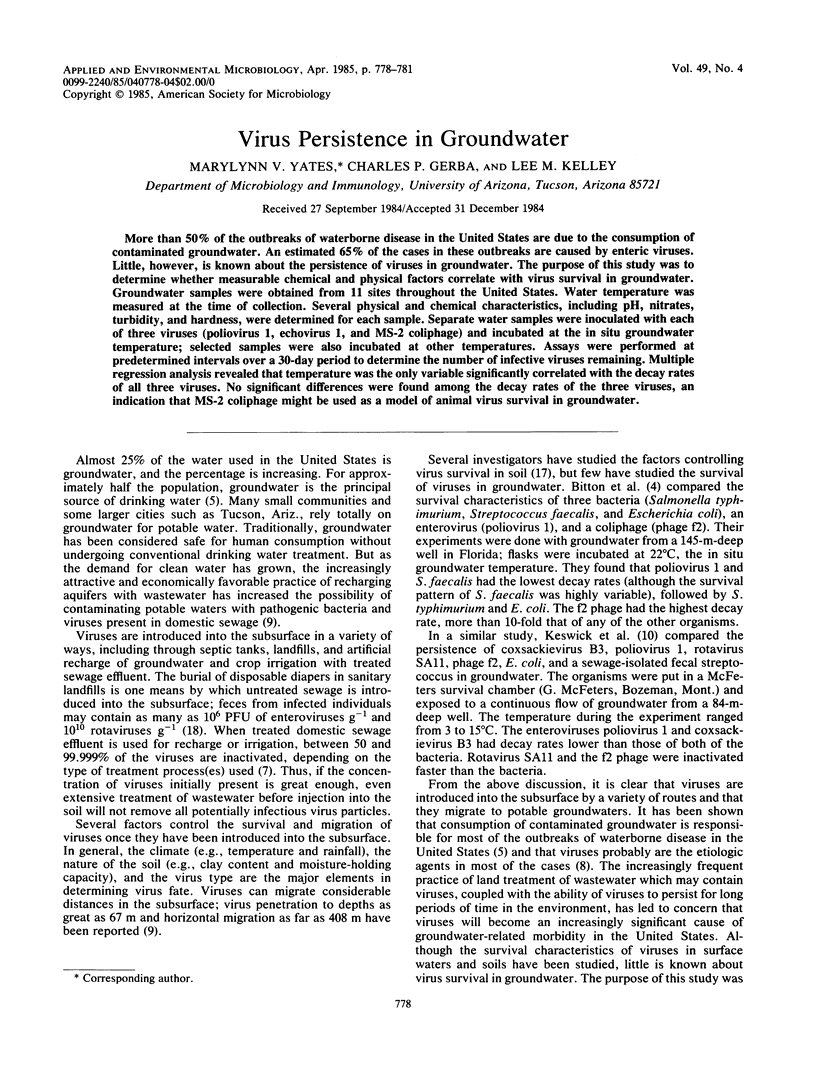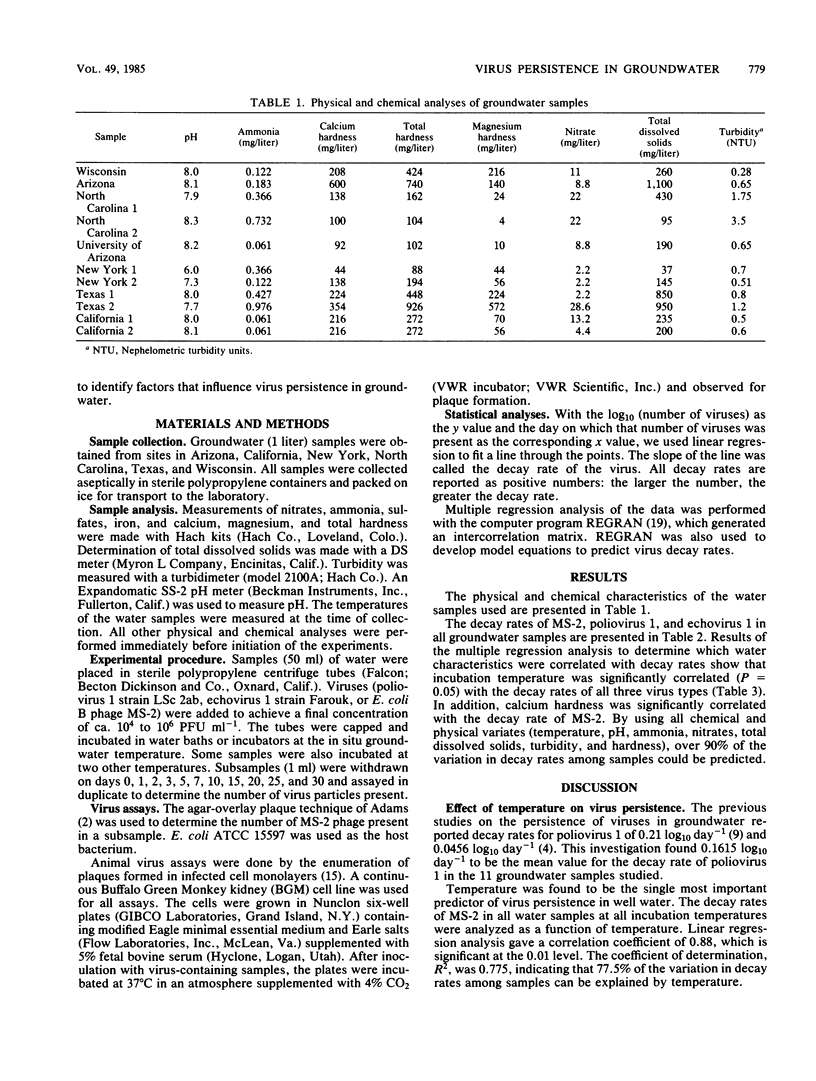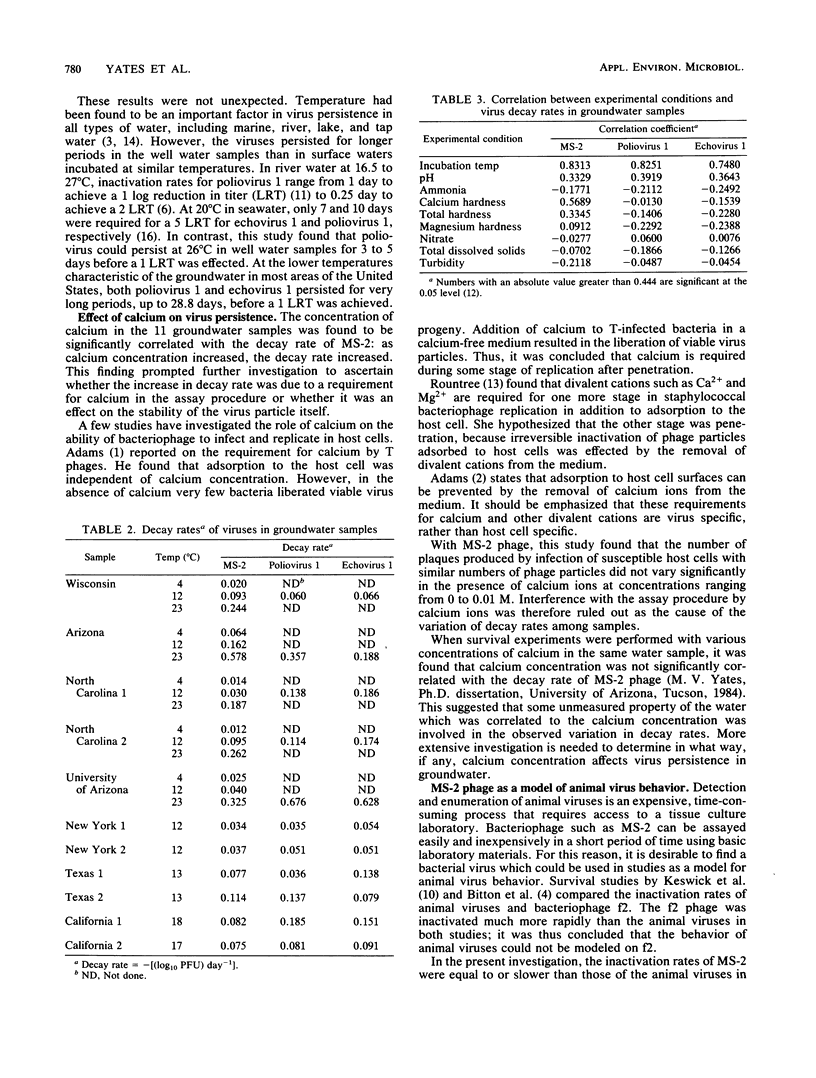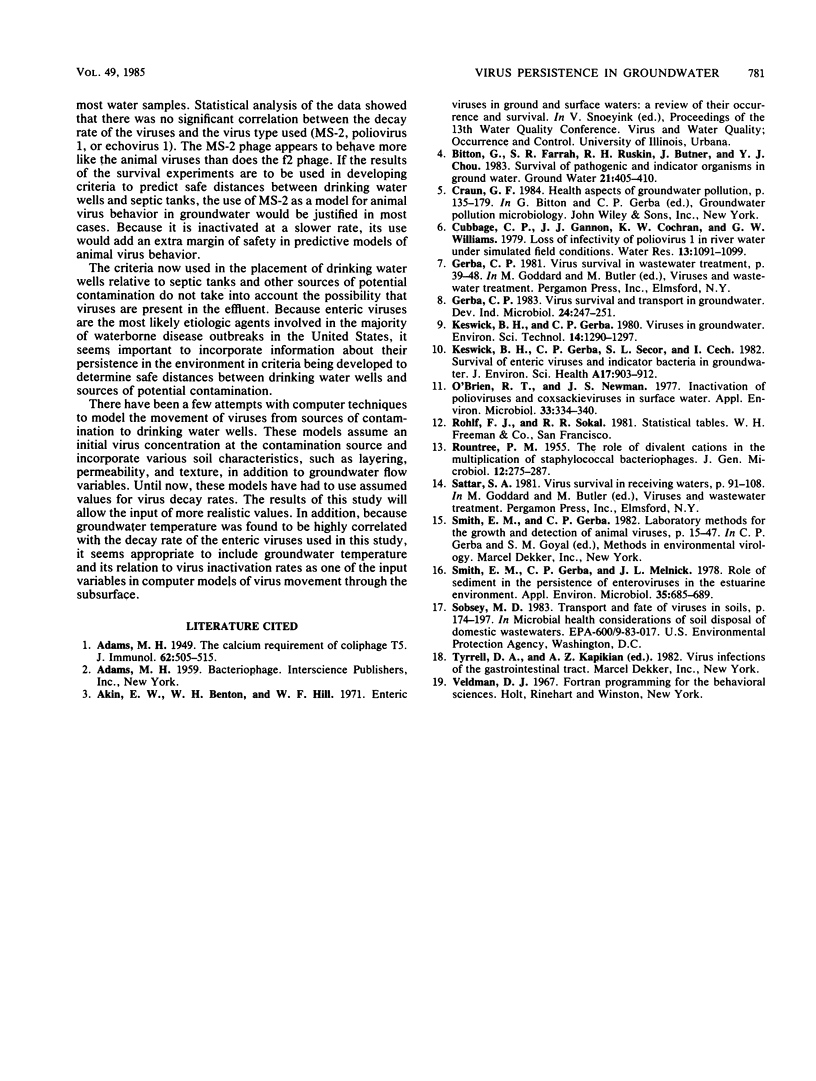Abstract
More than 50% of the outbreaks of waterborne disease in the United States are due to the consumption of contaminated groundwater. An estimated 65% of the cases in these outbreaks are caused by enteric viruses. Little, however, is known about the persistence of viruses in groundwater. The purpose of this study was to determine whether measurable chemical and physical factors correlate with virus survival in groundwater. Groundwater samples were obtained from 11 sites throughout the United States. Water temperature was measured at the time of collection. Several physical and chemical characteristics, including pH, nitrates, turbidity, and hardness, were determined for each sample. Separate water samples were inoculated with each of three viruses (poliovirus 1, echovirus 1, and MS-2 coliphage) and incubated at the in situ groundwater temperature; selected samples were also incubated at other temperatures. Assays were performed at predetermined intervals over a 30-day period to determine the number of infective viruses remaining. Multiple regression analysis revealed that temperature was the only variable significantly correlated with the decay rates of all three viruses. No significant differences were found among the decay rates of the three viruses, an indication that MS-2 coliphage might be used as a model of animal virus survival in groundwater.
Full text
PDF



Selected References
These references are in PubMed. This may not be the complete list of references from this article.
- O'Brien R. T., Newman J. S. Inactivation of polioviruses and coxsackieviruses in surface water. Appl Environ Microbiol. 1977 Feb;33(2):334–340. doi: 10.1128/aem.33.2.334-340.1977. [DOI] [PMC free article] [PubMed] [Google Scholar]
- ROUNTREE P. M. The role of divalent cations in the multiplication of staphylococcal bacteriophages. J Gen Microbiol. 1955 Apr;12(2):275–287. doi: 10.1099/00221287-12-2-275. [DOI] [PubMed] [Google Scholar]
- Smith E. M., Gerba C. P., Melnick J. L. Role of sediment in the persistence of enteroviruses in the estuarine environment. Appl Environ Microbiol. 1978 Apr;35(4):685–689. doi: 10.1128/aem.35.4.685-689.1978. [DOI] [PMC free article] [PubMed] [Google Scholar]


